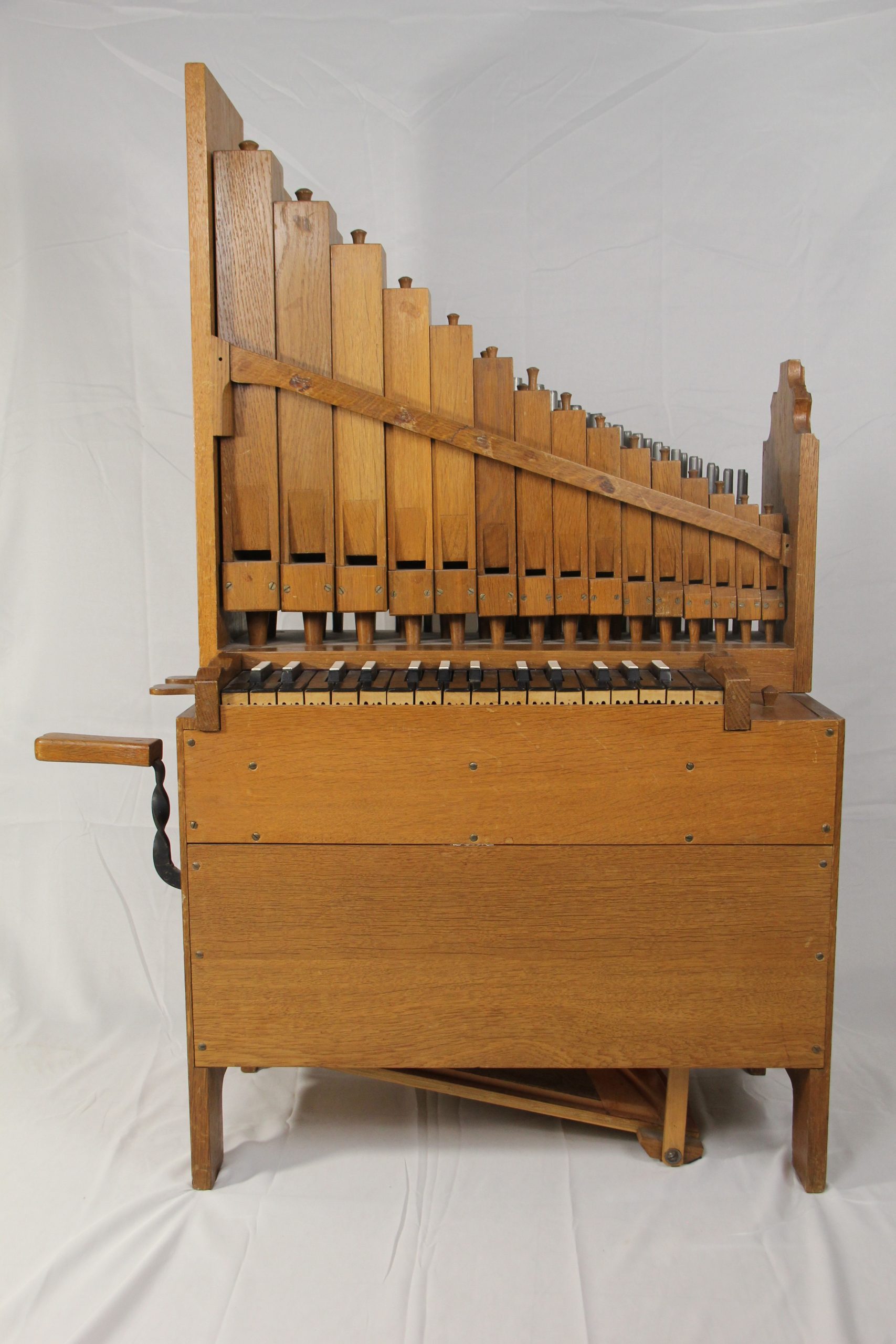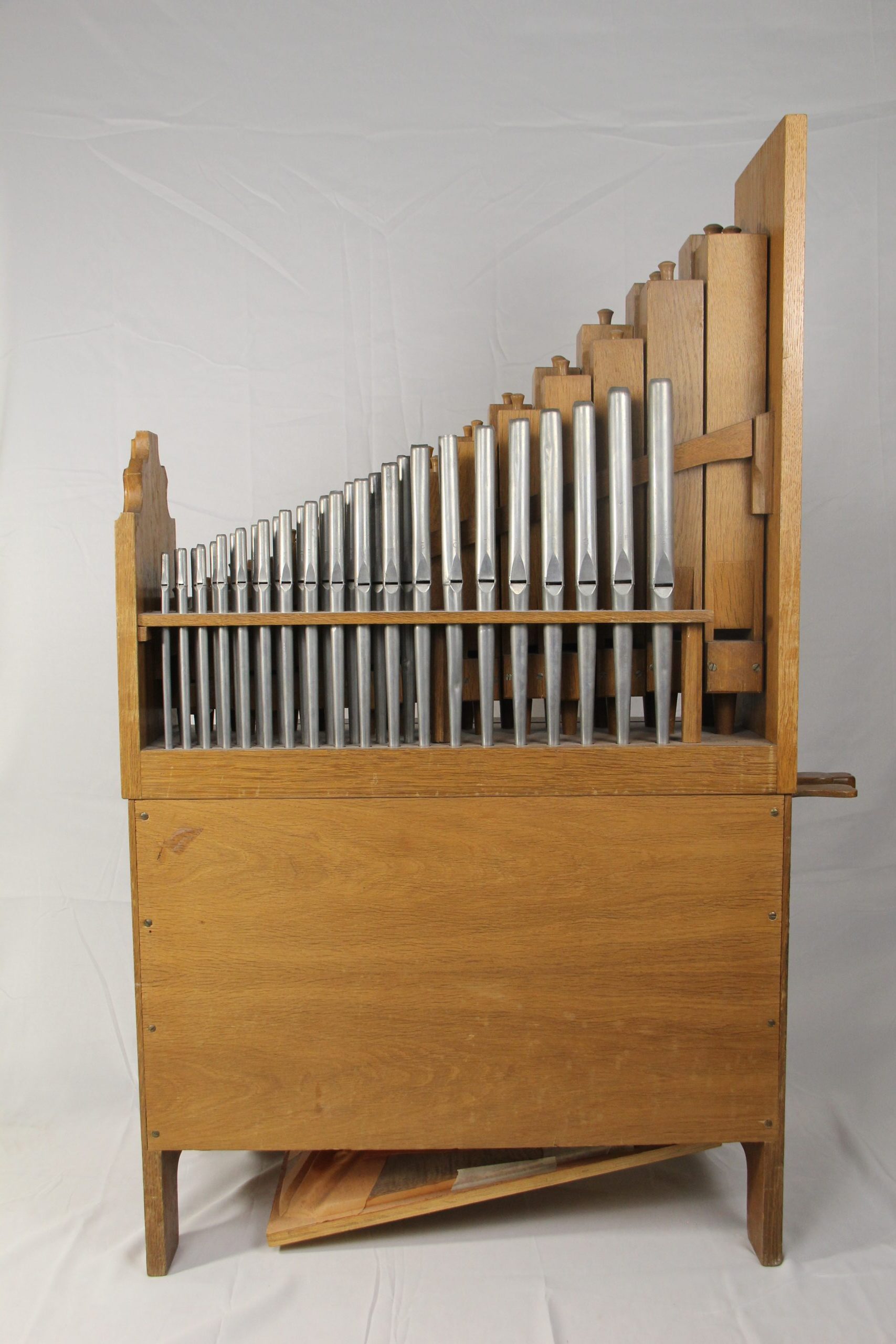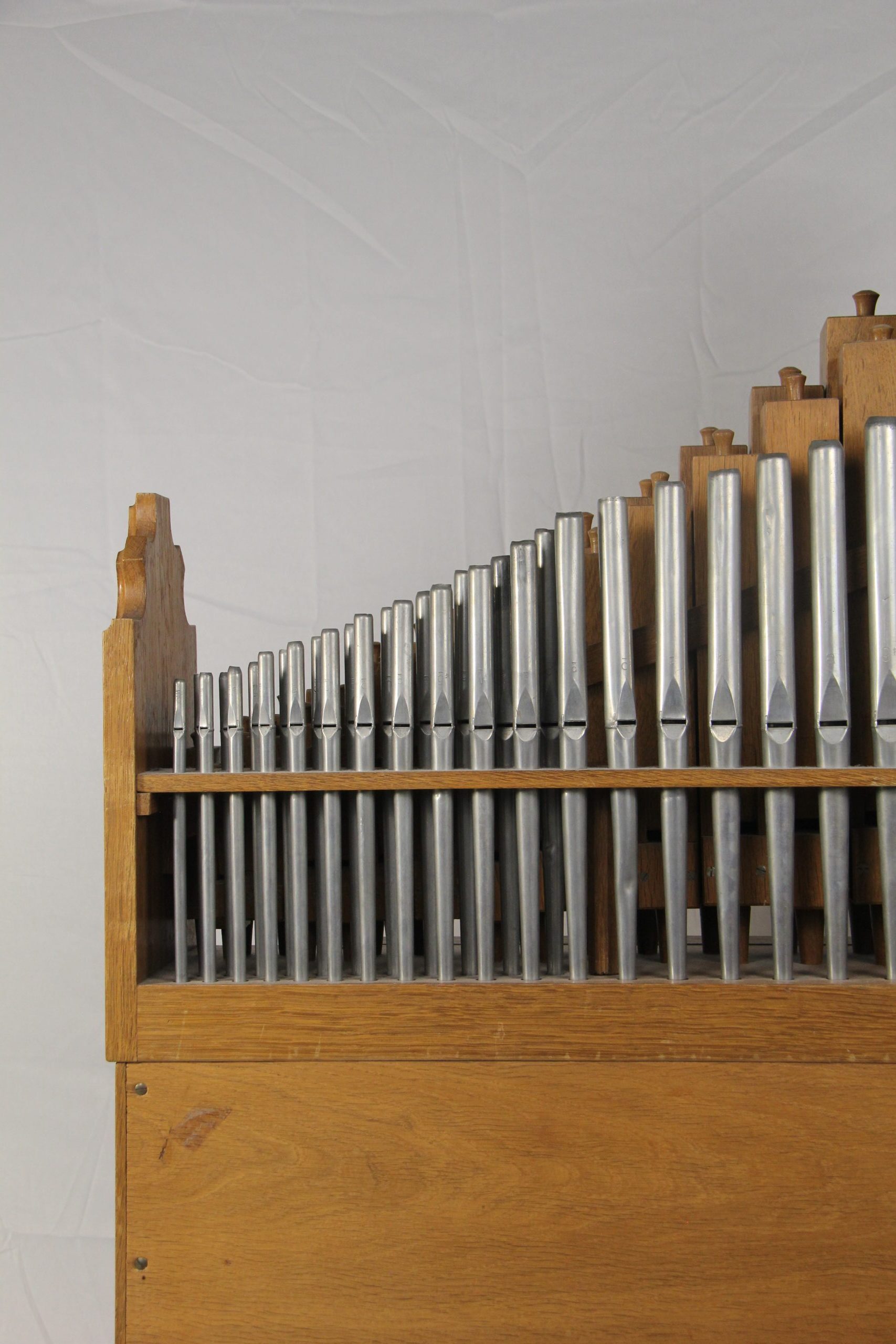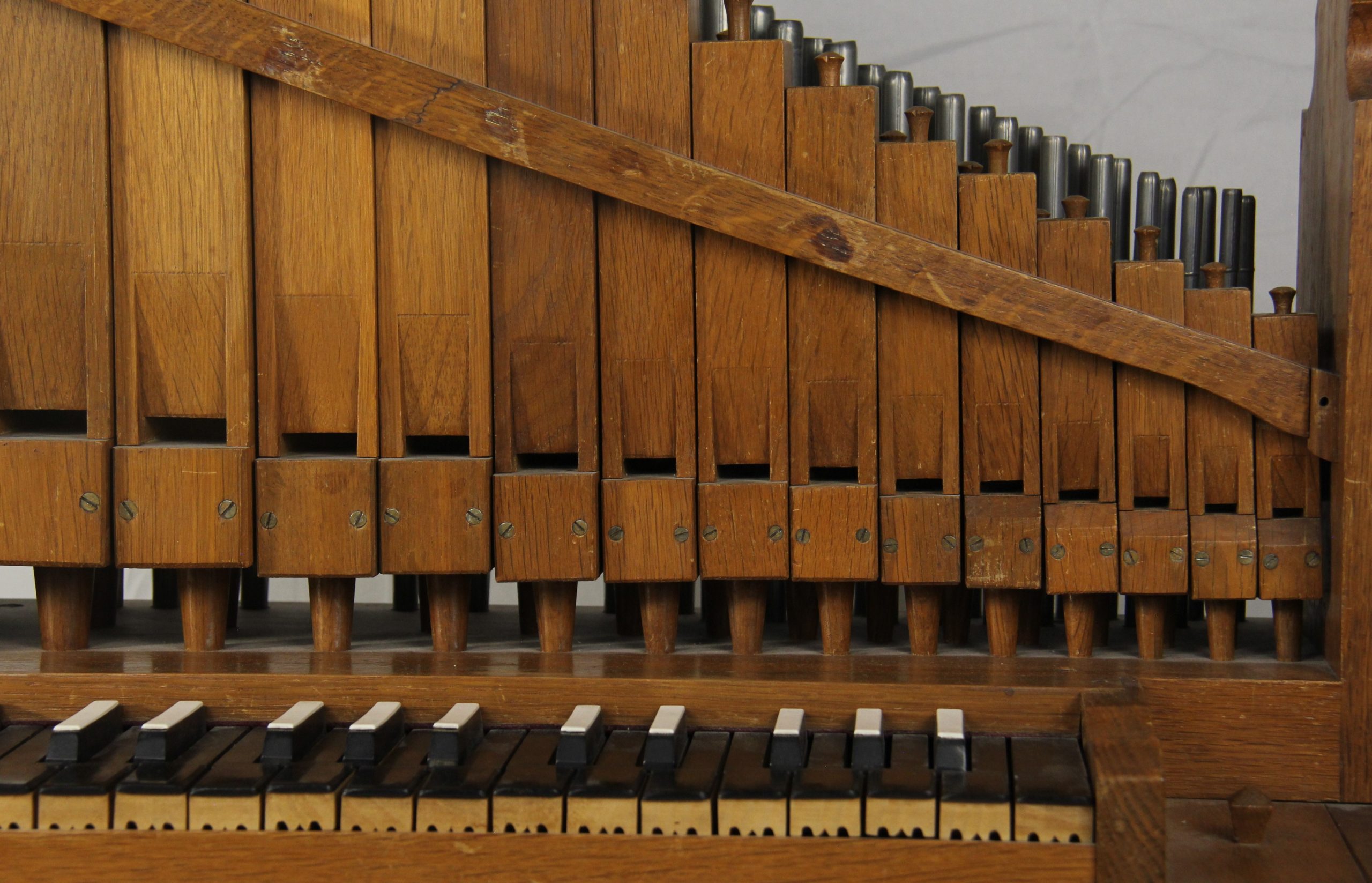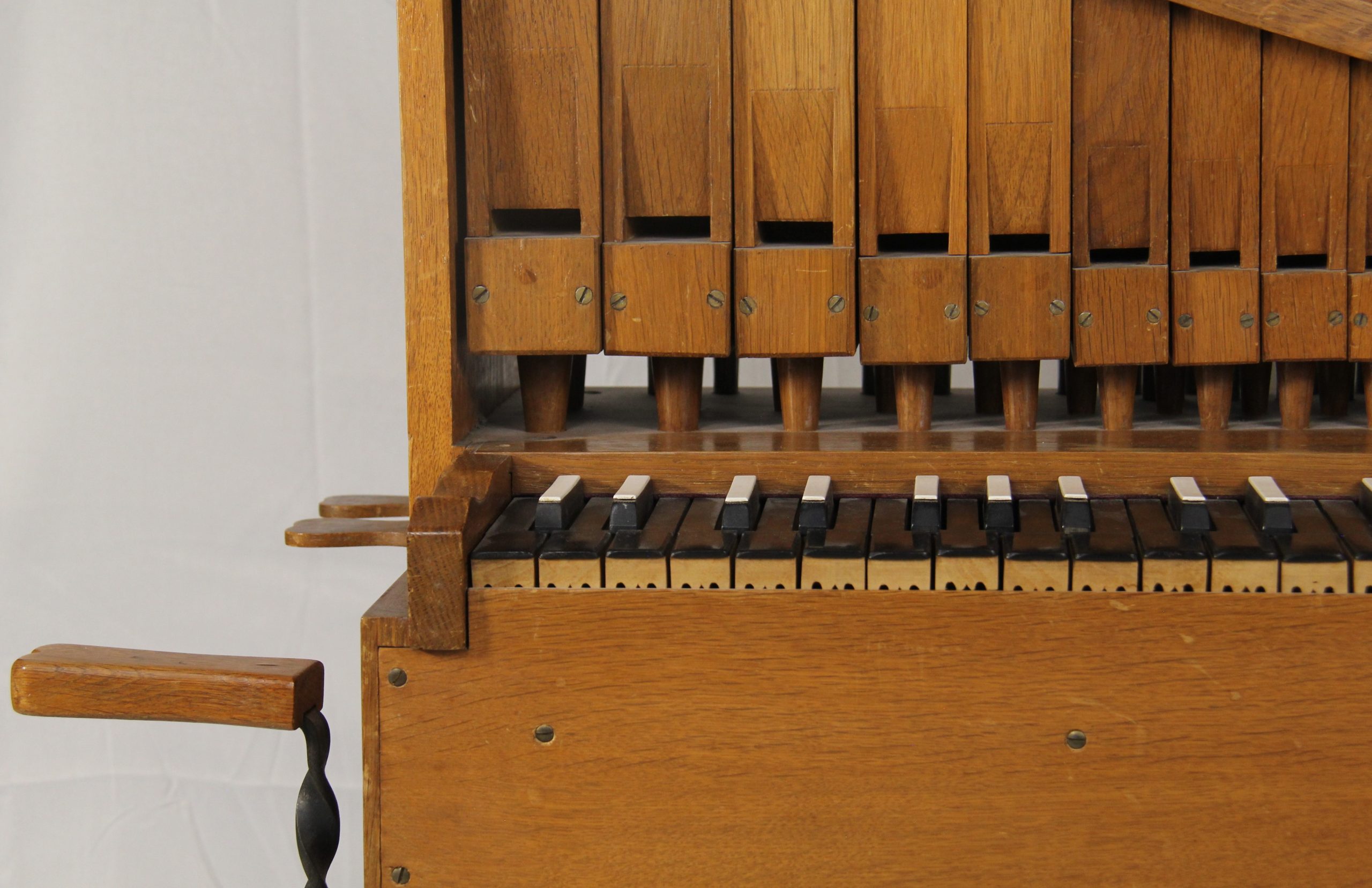Portative Organ
Details
- Origin: Vermont, U.S.A.
- Date: 1955
- Maker: Georg Steinmeyer
- Collection: CJW 111
Description
Large rectangular wooden body, intricate carved designs on the sides and back, bone (or plastic) keys painted black and white in the front. Wood-handled metal pump on the left, corresponding bellows beneath. Two large rows of rectangular flute pipes directly behind the keys, further behind are two rows of metal pipes. Each pair of rows corresponds to a respective wooden slat stop, both of which are behind the pump. On the left side are the labels “Oktave 2” (metal pipes stop) and “Gedakt 8” (wooden pipes stop), on the right side is the label “Steinmeyer.”
Sequence by Hildegard of Bingen, played on the DUMIC collection portative organ
The portative, or “portatif” organ, also referred to as the “organetto” during the Italian Trecento, is a small, somewhat mobile organ instrument usually containing one rank of flute pipes. The pipes are sometimes arranged in two rows to conserve space, as seen on this instrument. Made sometime in the mid 20th century, this instrument is a reproduction modeled after the medieval portative organ primarily used in European secular music from the 12th to 16th centuries. Traditionally, players used two fingers of their dominant hand to play melodies while the other hand operated the bellows at the back or underneath the organ. On this model, a hand pump on the side of the instrument is used to activate the bellows. Smaller models were able to be held and played, though larger models such as this must be placed on a flat surface. There is a direct mechanical connection between the keys and the pallets: the valves that allow the air to reach the pipes when the keys are pressed. The bellows feed a small internal reservoir, allowing the organist to play fairly continuously rather than strictly when the pump is in action.
This sort of organ was typically used for music with single melodic lines, although sometimes used to supply drones against another main melody. The compass of the keyboard is about two and a half octaves. The “Gedakt” stop, corresponding to the row of wooden pipes on the instrument, has a flute-like sound. The “Oktave” stop corresponds to the Principal row of pipes, which are metal and similar to those found on most typical organ façades. The Principal rank of pipes is much brighter in timbre and plays about two octaves higher than the Gedakt pipes.
In 1950, Georg Steinmeyer began working as the factory supervisor at the Estey organ company in Brattleboro, VT after moving from Germany following WWII; he came from an organ building family that began their practice in 1847. He is noted to have worked with famed organist E. Power Biggs in the mid 1950s, making recordings of organs that may have been played by Mozart. Estey closed in 1960, but Georg remained in the organ industry in some capacity through his death in 2015. As the date suggests, this instrument was likely made during Steinmeyer’s time at Estey, but it is unknown whether or not it was built in the Estey factory. While it remains unclear if Steinmeyer himself was personally involved in the building of this particular instrument, he has recalled that a similar instrument may have present in his family home.
Sources
Del Fiorentino, Dan. “Georg Steinmeyer.” NAMM, October 15, 2011. https://www.namm.org/library/oral-history/georg-steinmeyer.
The Editors of Encyclopædia Britannica. “Portative Organ.” Encyclopædia Britannica. Encyclopædia Britannica, inc., July 20, 1998. https://www.britannica.com/art/portative-organ.
“Organetto.” Musica Antiqua. Accessed June 13, 2022. https://www.music.iastate.edu/antiqua/instrument/organetto.
Santoianni, John. “Our Steinmeyer Portative Organ.” Duke University Department of Music, May 30, 2013. https://music.duke.edu/news/our-steinmeyer-portative-organ.
